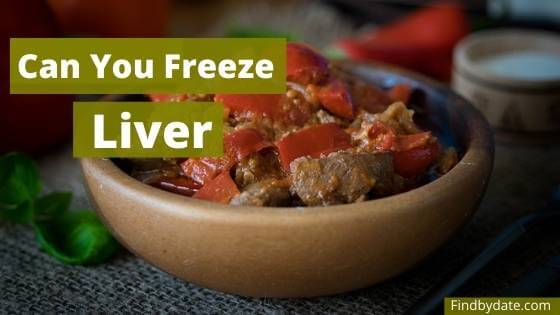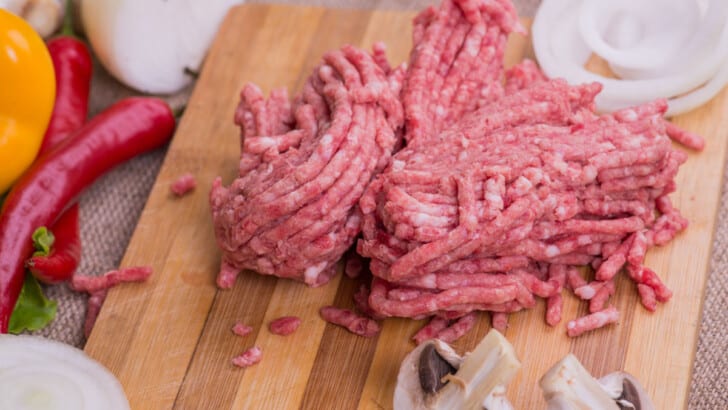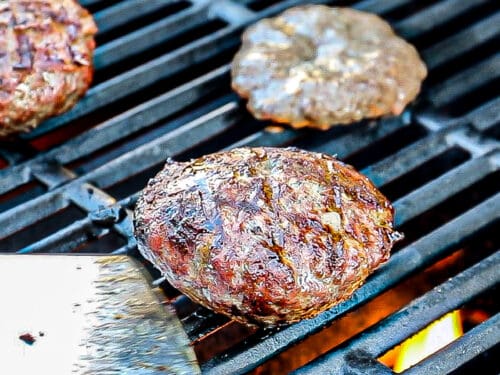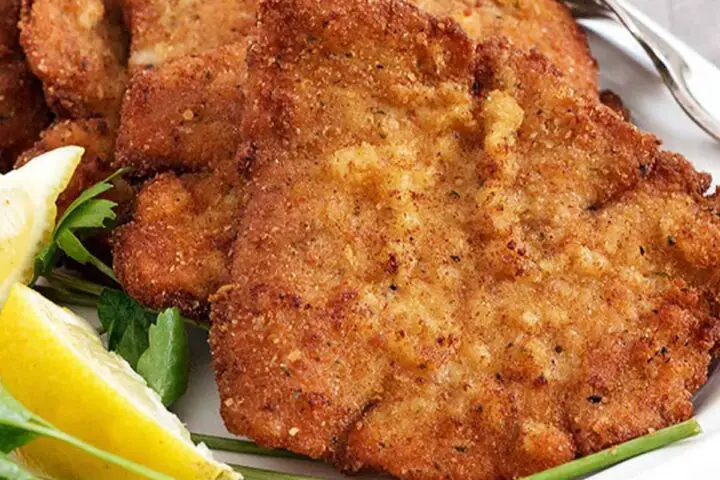How to Store Cooked Liver
Liver is a nutrient-dense superfood. It is high in protein, iron, and vitamin A. Its dense nutritional profile makes it a go-to food for athletes and fitness enthusiasts.
However, cooked liver can be tricky to store. If not stored properly, cooked liver can become dry and rubbery, losing its taste and texture.
In this article, we will explore the different ways to store cooked liver to maximize its taste and nutritive values.
Introduction
Cooked liver refers to the preparation of liver meat through heat treatment. It’s commonly fried or grilled and served in a variety of dishes. Storing cooked liver properly is crucial in maintaining its taste and composition while maximizing its nutritional value.
Factors That Affect Storage of Cooked Liver
The storage life of cooked liver depends on several factors that can either extend or decrease its shelf life. These include:
Temperature
The temperature at which you store your cooked liver determines how long it stays safe to eat. The recommended temperature range for storing cooked meat is between 36°F (2°C) – 40°F (4°C) in the fridge, and below 0°F (-18°C) in the freezer.
Humidity
Cooked liver should be stored at moderate humidity levels ranging from 90%-98% relative humidity to keep it moist and fresh.
Airflow
Adequate ventilation prevents the accumulation of heat, moisture, and bacteria that can cause spoilage of cooked liver.
How Not to Store Cooked Liver
Leaving cooked liver exposed or poorly wrapped can cause bacterial growth, resulting in spoilage. Here are a few ways you shouldn’t store cooked liver:
- Leaving it at room temperature for more than two hours
- Freezing it without wrapping properly
- Keeping it out in the open or on an open shelf
- Using the wrong containers, such as a paper bag or plastic container that is not airtight
Best Ways to Store Cooked Liver
Here are the best ways to store cooked liver to ensure maximum freshness and longevity:
Storing in the Fridge
The refrigerator is an optimal storage place if you want to keep your cooked liver fresh for up to seven days.
To store your cooked liver in the fridge, consider:
Proper Wrapping Techniques
Proper wrapping prevents dehydration, freezer burn, and bacterial contamination of your cooked liver. Here are a few techniques to try:
- Aluminum Foil: Wrap your cooked liver using aluminum foil before placing it in an airtight container to avoid overexposure to air
- Plastic Wrap: You can also wrap your cooked liver using plastic cling wrap while ensuring it remains sealed tightly to prevent exposure to moisture.
- Ziplock Bags: Place your wrapped cooked liver in a Ziplock bag and seal tightly to ensure maximum freshness.
Keeping It in Airtight Containers
If placing your wrapped cooked liver into an airtight container, choose one labeled safe for containing foodstuffs. This is ideal as it provides a sealed environment that reduces exposure to external contaminants while keeping the moisture content in check.
Freezing Cooked Liver
Freezing cooked liver is the safest way of storing it for an extended period. Here are a few things to consider:
Techniques for Freezing
To freeze cooked liver successfully, follow these techniques:
- Pre-cooking: Ensure your cooked liver is at room temperature before wrapping and refrigerating or freezing it.
- Portioning: Cut your cooked liver into small portions for easier reheating and packaging convenience. Place each portion in individual freezer bags to prevent unnecessary refreezing of the whole batch.
- Wrapping: Place portions of your wrapped cooked liver in a freezer-safe bag or container labeled with specific dates to track their storage period.
- Labeling: It’s essential to label your packaged cooked liver with the specific date so you can track its rate of consumption. This helps avoid consuming expired products and ensures you’re using the oldest ones first.
Thawing Techniques
To thaw frozen cooked liver, use either of these methods:
- The Refrigeration Method: Transfer from freezer to fridge 12-24 hours before consumption. This allows even thawing and prevents bacterial proliferation that can occur when using other thawing techniques.
- The Cold Water Method: Place frozen portions in sealable plastic bags, ensuring no water seeps through, then place them in a bowl of cold water until fully thawed. Change the water after every 30 minutes to ensure a constant temperature.
Vacuum Sealing Cooked Liver
Vacuum sealing is arguably the best method of storing cooked liver for long-term use, up to six months or longer. The process involves removing all the air from the packaging through a vacuum sealing machine. This eliminates bacteria that thrive in environments with oxygen.
To vacuum seal cooked liver, follow these steps:
- Cook the Liver: Heat your liver thoroughly before sealing it.
- Cool and wrap: After heating, let the liver cool, wrap it securely in foil or cling film, then put it into a vacuum-sealed bag.
- Vacuum seal: Place your packaged liver in a vacuum sealer and remove as much air as possible before sealing
Duration of Storage for Cooked Liver
The duration for how long cooked liver stays fresh depends on how well you’ve handled and stored it. Here’s what to consider when storing cooked liver:
Fridge Storage Duration
The recommended safe storage duration of cooked liver in the refrigerator is three to four days, while properly wrapped or sealed cooked liver can last for up to seven days.
The best temperature range to maintain quality is between 36°F (2°C) – 40°F (4°C) and relative humidity levels between 90-98%. Avoid opening and closing the fridge door frequently as this will result in fluctuating temperatures that accelerate bacterial growth.
Freezer Storage Duration
Air tightly wrapped or vacuum sealed cooked liver can last between three to six months. It’s essential to label each portion with the specific date to prevent any wastage of expired food.
The recommended temperature range for keeping your cooked liver in the freezer is below 0°F (-18°C). Avoid constant opening and closing of the freezer, which can cause a temperature fluctuation that reduces the lifespan of stored liver.
How to Reheat Stored Cooked Liver
To restore the flavor and texture of cooked liver after storage, consider the following reheating techniques:
Reheating in Microwave
This method is fast and quite convenient, but avoid overcooking or overheating your cooked liver. Follow these techniques:
- Techniques for Reheating: Place your portioned cooked liver on a microwave-safe plate, wrap it with plastic film to retain moisture levels, heat for about 30 seconds. Check to ensure it’s heated throughout before serving.
- Risks and Safety Precautions: Avoid using metal containers in microwaved food as they can cause explosions or damage microwaves. Also, always exercise caution while removing hot plates from the microwave as they can cause scalds or burns.
Reheating on Stove
You can restore your cooked liver on a stovetop using this simple technique:
- Techniques for Reheating: Preheat a frying pan over medium-high heat, add some oil or butter. Once adequately heated up, add your sliced portions of cooked liver into the pan until heated through.
- Risks and Safety Precautions: Exercise caution while working with high-temperature oils and avoid overcrowding your pan. Overcrowding causes steaming, which lowers the quality of your cooked liver.
How to Tell If Cooked Liver is Spoiled
If you’re unsure if your cooked liver has spoiled, here are some telltale signs that your liver needs to be discarded:
- Slimy texture
- Foul odor
- Discoloration or change in texture
- Visible mold
- Unintended physical sensations when consumed, such as nausea, vomiting, or diarrhea.
Risks of Consuming Spoiled Liver: Consuming spoiled liver can cause food poisoning with symptoms such as vomiting and diarrhea. If left unchecked, complications such as dehydration and electrolyte disturbances can occur. In severe cases, botulism and salmonella poisoning can result in long-term health effects and require hospitalization.
Conclusion
Efficient storage procedures are crucial for maintaining the taste and nutritive values of cooked liver. Although storing cooked liver can be a challenging task, proper techniques like wrapping securely and tagging ensure that you’re enjoying a safe and healthy meal. Ensure you utilize the right storage methods outlined in this guide to give your cooked liver extended life while still freshening up its taste.
#### How long can cooked liver be stored in the refrigerator?
Cooked liver can be stored in the refrigerator for up to three days. It is essential to let it cool down to room temperature before refrigerating it to prevent bacterial growth.
#### Can cooked liver be frozen?
Yes, cooked liver can be frozen for up to three months. However, before freezing, ensure that it is cooled down to room temperature and stored in an airtight container or freezer bag.
#### How to reheat cooked liver?
The best way to reheat cooked liver is by placing it in a preheated oven at 350 degrees Fahrenheit for 10-15 minutes. You can also use a microwave or stovetop, but be careful not to overcook it.
#### Are there any safety precautions that I should consider when storing cooked liver?
When storing cooked liver, maintain a fridge temperature of 40 degrees Fahrenheit or lower. Additionally, store the liver on the lowest shelf of the refrigerator to avoid any cross-contamination with other foods. Always make sure that you follow proper food safety guidelines when handling and storing any type of food.







